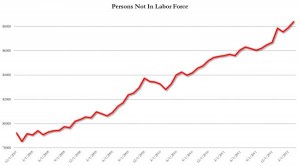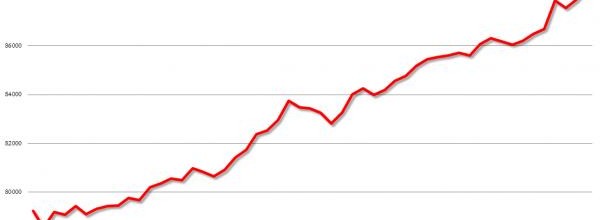The Great Unemployment Hoax
FOR IMMEDIATE RELEASE
May 5, 2012 – A poll by the Pew Resarch Center for the People and the Press found that 66% of respondents think that news stories are often inaccurate, 63% think reporters are politically biased and 72% think the media try to cover up their mistakes. All percentages are the highest since Pew started doing the surveys in 1985.
Point in fact: the current unemployment numbers released today. The rate of 8.1% is regarded as a relative improvement. After all, it IS going down right? Anyone who doesn’t closely follow the economy (say, most people) who turn on their local newscast today will see LOWER UNEMPLOYMENT 8.1%! Happy days are here again!
However, the mainstream media and the current administration will color over what are actually some devastating and profound realities: The numbers published by the BLS (Bureau of Labor Statistics) showing 8.1% do not count those who have given up looking for work or those that have expired their unemployment benefits.
In other words, after a certain period of time, if you can’t find a job, the government sees you as a non-entity and you are no longer counted in the labor force.
If you dig under the cover headline of 8.1% we see that the number of people who are not counted as being in the labor force soared to the highest levels in 30 years. At that time, America was in the midst of a stagflation period and interest rates needed to be raised to almost 20 points before the system flushed out the financial viruses.

“It is just getting sad now. In April the number of people not in the labor force rose by a whopping 522,000 from 87,897,000 to 88,419,000. This is the highest on record. The flip side, and the reason why the unemployment dropped to 8.1% is that the labor force participation rate just dipped to a new 30 year low of 64.3%.” –Zerohedge
Let’s put it in pre-recession, real numbers perspective. In July 2007 (the peak of the most recent growth period) there were 78.7 million people not in the labor force. The unemployment rate was 4.6%.
In other words, including all those that have newly entered the labor force (e.g. recent graduates), more than 10 million people have dropped out since 2007. 10 million people have given up looking, so now the BLS doesn’t consider them part of the workforce.
In just the last month “the civilian labor force shrank in April by 342,000 workers, and remains below where it stood when the economic recovery started 34 months ago,” according to today’s BLS report. Had the labor force not declined, unemployment would have been 8.3% in April, instead of the 8.1% reported.
There are other measures that shows the reality is closer to 13% unemployment when we take apart the BLS’s confusing averaging and survey methods utilized in their data gathering.
As small business advocates, we are focused on what is truly happening in the economy. It appears to us that while the media seems feverishly focused on manipulating unwitting voter blocks with artificial attention grabbing narratives (ie: “war on women”) the underlying foundation of the economy is teetering on a very dangerous edge which may take literally a decade before it can get back to pre-recessionary employment levels.
The most recent GDP released in April shows an anemic 2.2% growth rate. To compare this to the GDP at this point in time during the recovery of the last “great recession” when the economy emerged from the recession of 1981-1982, for instance, growth hit an 8% annual pace for four straight quarters in 1983 and 1984.
If the U.S. stays on the current course, the mainstream media may need put their politics aside and level with the American people; that the country is now experiencing the slowest post recession growth period in the country’s history.
In Japan they called the nineties the “lost decade”. The Japanese media were at least honest about their situation.





